- Clone
- 2G12 (See other available formats)
- Regulatory Status
- RUO
- Other Names
- CC CKR-4, CHEMR1, Cmkbr4, LESTR, MGC151418, Sdf1r
- Isotype
- Armenian Hamster IgG
- Ave. Rating
- Submit a Review
- Product Citations
- publications
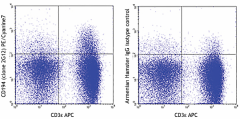
-

Multiple-immunized Balb/c lymph node cells stained with CD3ε (clone 145-2C11) APC and CD194 (clone 2G12) PE/Cyanine7 (left) or Armenian Hamster IgG isotype control (right).
| Cat # | Size | Price | Quantity Check Availability | Save | ||
|---|---|---|---|---|---|---|
| 131213 | 25 µg | £121 | ||||
| 131214 | 100 µg | £262 | ||||
Mouse CCR4 cDNA contains 1531 bp, and encodes a protein of 360 amino acids that is 85% identical to human CCR4. CCR4 binds CCL17 (TARG) and CCL22 (MDC). Naïve T cells, bearing receptors for cutaneous antigens, become activated in skin-draining lymph nodes and express cutaneous lymphocyte antigen (CLA), which confers to these cells the capacity to migrate into the skin to exert their normal effector functions (1). CCR4 and CCR10 play an important role in the ligand-mediated recruitment of T cells into the skin in mice and humans, specifically with regards to tethering, firm adhesion, and subsequent extravasation to the site of injury (2,3). CCR4 is expressed in cutaneous regulatory T cells (Tregs). These cells are crucial for the induction and maintenance of self-tolerance and are present in peripheral tissues such as skin and gut under normal, noninflamed conditions (4).In addition, recruitment of Foxp3+ T regulatory cells mediating allograft tolerance depends on the CCR4 chemokine receptor and its ligand CCL22 (5).
Product DetailsProduct Details
- Verified Reactivity
- Mouse
- Antibody Type
- Monoclonal
- Host Species
- Armenian Hamster
- Formulation
- Phosphate-buffered solution, pH 7.2, containing 0.09% sodium azide.
- Preparation
- The antibody was purified by affinity chromatography, and conjugated with PE/Cyanine7 under optimal conditions.
- Concentration
- 0.2 mg/ml
- Storage & Handling
- The antibody solution should be stored undiluted between 2°C and 8°C, and protected from prolonged exposure to light. Do not freeze.
- Application
-
FC - Quality tested
- Recommended Usage
-
Each lot of this antibody is quality control tested by immunofluorescent staining with flow cytometric analysis. For flow cytometric staining, the suggested use of this reagent is ≤ 1.0 µg per 106 cells in 100 µl volume. It is recommended that the reagent be titrated for optimal performance for each application.
- Excitation Laser
-
Blue Laser (488 nm)
Green Laser (532 nm)/Yellow-Green Laser (561 nm)
-
Application References
(PubMed link indicates BioLegend citation) -
- Saito K, et al. 2008. J. Immunol. 181:6889. PubMed
- Ueha S, et al. 2007. J. Leukoc. Biol. 82:1230. PubMed
- 3. Sharma R, et al. 2009 J. Immunol. 183:1065 (FC) PubMed
- Dogan R, et al. 2011. J. Leukoc. Biol. 89:93. PubMed
- Liu H, et al. 2011. Sci Transl Med. 3:82. PubMed.
- Shankar SP, et al. 2012. J Immunol. 188:6347. PubMed.
- Product Citations
-
- RRID
-
AB_2074506 (BioLegend Cat. No. 131213)
AB_2244410 (BioLegend Cat. No. 131214)
Antigen Details
- Structure
- GPCR, chemokine receptor, seven transmembrane receptor
- Distribution
-
Memory T cells, macrophages, platelets, basophils, Th2 cells, and Tregs
- Function
- CCR4 and its ligands (CCL17 and CCL22) are important for the recruitment of memory T cells into the skin in various cutaneous immune diseases.
- Interaction
- Interaction between CCR4 and its ligand TARC/CCL17 on activated endothelial cells mediates T cell extravasation by stimulating integrin-dependent adhesion
- Ligand/Receptor
- CCl17 and CCL22
- Cell Type
- Basophils, Embryonic Stem Cells, Macrophages, Platelets, T cells, Th2, Tregs
- Biology Area
- Immunology, Stem Cells
- Molecular Family
- CD Molecules, Cytokine/Chemokine Receptors, GPCR
- Antigen References
-
1. Biederman T, et al. 2002. Eur. J. Immun. 32:3171.
2. Mirshahpanah P, et al. 2008. Exp. Dermatol. 17:30.
3. Kusumoto M, et al. 2007. J. Interferon Cytokine Res 27:901.
4. Clark RA and Kupper TS. 2006. Blood 109:194.
5. Lee I, et al. 2005. J. Exp. Med. 201:1037. - Gene ID
- 12773 View all products for this Gene ID
- UniProt
- View information about CD194 on UniProt.org
Related FAQs
- Does staining at room temperature or even at 37°C help for checking chemokine receptors expression?
-
Due to continuous recycling of many chemokine receptors, it may be worthwhile to consider staining at room temperature or at 37°C if the staining at lower temperature (which can potentially reduce receptor turnover) is not optimal.
Other Formats
View All CD194 Reagents Request Custom Conjugation| Description | Clone | Applications |
|---|---|---|
| Purified anti-mouse CD194 (CCR4) | 2G12 | FC |
| PE anti-mouse CD194 (CCR4) | 2G12 | FC |
| APC anti-mouse CD194 (CCR4) | 2G12 | FC |
| PE/Cyanine7 anti-mouse CD194 (CCR4) | 2G12 | FC |
| Biotin anti-mouse CD194 (CCR4) | 2G12 | FC |
| Brilliant Violet 421™ anti-mouse CD194 (CCR4) | 2G12 | FC |
| PerCP/Cyanine5.5 anti-mouse CD194 (CCR4) | 2G12 | FC |
| TotalSeq™-C0833 anti-mouse CD194 (CCR4) | 2G12 | PG |
| TotalSeq™-B0833 anti-mouse CD194 (CCR4) Antibody | 2G12 | PG |
| TotalSeq™-A0833 anti-mouse CD194 (CCR4) | 2G12 | PG |
| PerCP/Fire™ 780 anti-mouse CD194 (CCR4) | 2G12 | FC |
Customers Also Purchased
Compare Data Across All Formats
This data display is provided for general comparisons between formats.
Your actual data may vary due to variations in samples, target cells, instruments and their settings, staining conditions, and other factors.
If you need assistance with selecting the best format contact our expert technical support team.
-
Purified anti-mouse CD194 (CCR4)
-
PE anti-mouse CD194 (CCR4)
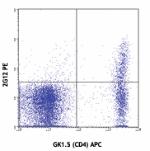
Hyper-immunized BALB/c splenocytes stained with GK1.5 (CD4) ... -
APC anti-mouse CD194 (CCR4)

Hyper-immunized BALB/c splenocytes stained with 145-2C11 (CD... -
PE/Cyanine7 anti-mouse CD194 (CCR4)

Multiple-immunized Balb/c lymph node cells stained with CD3&... -
Biotin anti-mouse CD194 (CCR4)
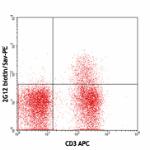
Hyper-immunized Balb/c splenocytes stained with CD3 APC and ... -
Brilliant Violet 421™ anti-mouse CD194 (CCR4)
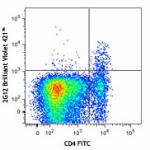

-
PerCP/Cyanine5.5 anti-mouse CD194 (CCR4)

Hyper-immunized BALB/c splenocytes stained with CD4 (clone G... -
TotalSeq™-C0833 anti-mouse CD194 (CCR4)
-
TotalSeq™-B0833 anti-mouse CD194 (CCR4) Antibody
-
TotalSeq™-A0833 anti-mouse CD194 (CCR4)
-
PerCP/Fire™ 780 anti-mouse CD194 (CCR4)

C57BL/6 splenocytes were stained with anti-mouse CD4 APC and...
 Login / Register
Login / Register 










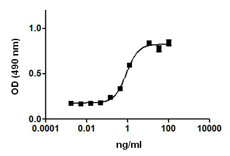
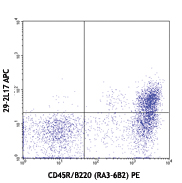
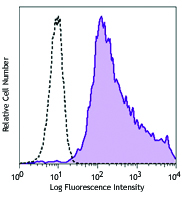




Follow Us